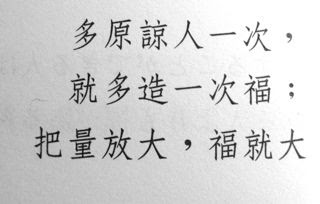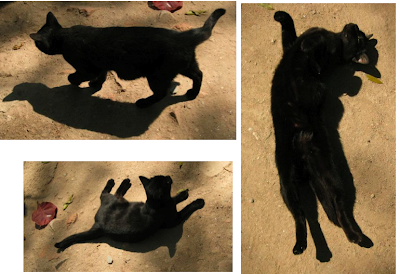[After sleeping on this, I've added a few thoughts on Crows are White. They are [bracketed]].
Got to the museum a little late (gave up trying for the 10am Children's program) and there was nothing showing in the auditorium. They'd had a glitch and so we got to see most of Big Crow. A lot of amateur footage, but it was edited together to tell a powerful story about a young woman who took her Pine Ridge reservation team to win the state championship. Her death soon after brough lots of folks together and inspired lots of improvements for the reservation and relations off reservation. Sad but inspiring.
I was going to post a few short posts, but then the wifi no longer worked. (Later I found out I could get it in the museum, but it was spotty in the auditorium.
And I got hijacked by Crows Are White and I want to focus on that movie, but first a quick overview of the rest of the day, which all took place in the museum.
The woman collecting the audience ratings of the films said that the morning kids program, really was very dark and the only thing kid about it, possibly, was that it was animated shorts.
Big Crow I wrote about above. I liked it.
Then came three shorts made in Alaska. The first Sabor Artico: Latinos en Alaska was about Latinos in Alaska. Interesting, but not exceptional film making.
Safe Enough was a about the Sitka summer arts camp and highlighted a number of the young artists attending. The theme seemed to be that this was a safe space where these artistic teens could actually be themselves and explore who they were. It was safe, unlike the world they binomially live in. It was uplifting, except that this escape only lasted two weeks. I couldn't help thinking that it shouldn't be so hard to envision communities where people who had unique talents could feel comfortable. And then I thought about how most people are just better able to conform, but that they too are denying who they really are to fit in. A film that stimulates you to move your understanding of things further is, in my book, a good film.
And the third short in this program, Kakińiik was by Patrick Hoffman whom I spoke to and whose video I put up before I went to bed last night. It's always tricky when you interview someone before you see their film. Sometimes the film doesn't work for you and you have this connection, albeit short, with the film maker. But that wasn't a problem in this case. This was a beautiful film, made up of a series of talks by women getting traditional Inupiat tattoos and how the tattoos connect them to their ancestors and their culture. There are also a couple of vignettes by the tattoo artist - talking about the styles of tattoos, traditional food and its relation to doing tattoos, and her own thigh tattoos. Each vignette is preceded by a stylized screen, which confused some of us in the audience the first time who weren't sure if this was the end. It wasn't. And we weren't fooled the next time either. It was like a book with several chapters separated by this artful page.
Then we got to Crows are White, which swept me away. Spoiler Alert: I'm going to write about the film in ways that assume the reader has either seen it or won't be able to see it. But in another way, it's the film itself that is what is so enjoyable and thought provoking and what I write shouldn't change that experience.
This was a film done in the style of a This American Life piece, with a narrator outlining the project and how things proceed throughout. The filmmaker, Ahsen Nadeem, narrates in a voice and tone not unlike Ira Glass, but the story he's pursuing, turns out to be his own. There are so many aspects of this film that are both amazing and bizarre. People who are noble and flawed. The photography was exquisite as was the music.
Crows AreWhite refers to a story someone tells about a monk who tells his disciples that crows are white, and while they all know this isn't true, they cannot contradict the monk. They must say, yes, crows are white.
My take is that the film is about people being forced to deal with contradictions to their understanding of how the world works. Ahsen's basic contradiction is that he's fallen in love with a non-Muslim and he knows his parents will disown him if he marries her. But we don't know this until after we've been set up to believe there are more general spiritual issues he's pursuing rather than answers to his very personal dilemma. [A film version of the guy climbing the rocky mountain to ask the monk on top the meaning of life.]
Another contradiction is that as a Muslim, he searches for answers from a Buddhist monk. But he learns that the head monk, Kamahori, he wants to pose his questions to has taken a vow of silence. And these monks are the ultramarathoners of Buddhist monks. They take a vow to walk a certain distance every day (something like 20 kilometers) and they have to do this until they've walked the equivalent of walking the circumference of the world. And part of the vow is that if they miss a day, they have to commit suicide.
Ahsen himself comes across as sincere and disarming not unlike ira Glass. But when you think about it, he's also so full of himself that he thinks he has the right to interrupt the lives of monks in this Japanese monastery with his film crew and persistence in trying to meet with the head monk. He gets kicked out when his cell phone rings during a secret ceremony they've allowed him to film. [But you can also ask why did the monks give him permission to film them in the first place? They are supposed to be focused on enlightenment and to not care about what others think. To indulge him? To spread Buddhist wisdom? To get publicity for the monastery? To increase their income?]
That's when he meets Ryushin, a monk assigned to greet visitors and answer questions in the monastery gift shop. Ryushin is probably the most honest and likable character in the movie. And his life dilemma is not unlike Ahsen's. His father and grandfather had been important monks at this monastery, but he really would rather be a sheep farmer in New Zealand, he thinks. But while he professes to be unhappy, he doesn't obsess on the contradictions. Yes, he's a monk, but he takes a drink now and then, loves ice cream, and goes to heavy metal concerts.
Another character who is relatively normal is Ahsen's girlfriend and later wife. I particularly cheered when she questioned Ahsen's taking cameras in to film his parents when he tells them he's been married to a non-Muslim for three years. Seems crass to her. But she understands that this is necessary to complete the film he's spent so much time on.
This could have been a mockumentary - a fictional documentary spoofing documentaries. [Part of me was wondering if it was while I was watching and hoping it was.] But all the contradictions and conflicts between what people ought to do and what they really do and how they reconcile it is what makes this such a good movie. And, of course the beautiful cinematography and the unexpected but perfect music.
Everything together works to make this an outstanding film.
And up through this point of the festival, all the films were about people who didn't quite fit in the societies they lived in - the nomads in Friday nights Last Birds of Passage, the Lakota reservation girls gaining self confidence and pride through basketball, the Latinos in Alaska, the campers in Sitka, and the Inupiat women regaining their heritage through traditional tattoos.
 |
| A Body Is a House of Familiar Rooms |
The afternoon shorts program didn't impress me. The one film that stood out - The Body Is A House Of Familiar Rooms - did so because of the colors and patterns that were so striking.
Also the paper programs are now available. Here's the Sunday schedule.
And finally, there's You Resemble Me which rounded out the night and I'm still processing that one. My biggest difficulty was subtitles when they weren't on dark backgrounds. A truly heartbreaking film of Arab refugee sisters put into foster homes with a disastrous result in one case.































































